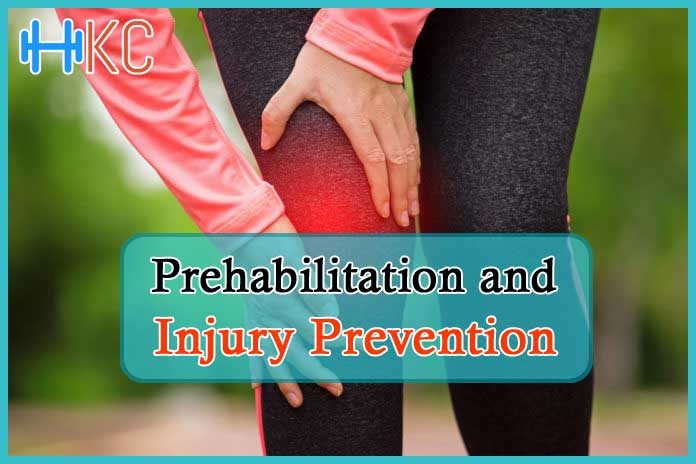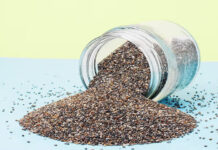Rehabilitation is something most, if not all of us have been through at some point. Whilst rehab can be unavoidable at times and is a requirement for an injury, imagine if we could somehow prevent or reduce our likelihood of experiencing these injuries in the first place.
Whilst impact of trauma injuries are largely unavoidable, many injuries are and, at the very least, we can reduce our chances of having them. Common injuries we see daily are rotator cuff tears, bursitis, back injuries, and plantar fasciitis. The thing all these have in common is that, in many cases, they are largely avoidable.
In many cases, pain is the successor to overuse, poor body awareness or weakness. Implementing specific exercise into your weekly routine can work as a protectant to many of these injuries and can better prepare your body for the loads that it experiences each day.
Prehabilitation – Overview
A rehabilitation program, on the other hand, reduces the risk of injury while at the same time increasing the chances of a positive outcome. The program is based on the premise you can minimize the injury risk, minimize the time on the sidelines, and minimize the pain of recovery through improving strength, flexibility and motor control in the areas most vulnerable to injury.
What is Injury Prevention?
Prehabilitation is basically any form of exercise, from walking to specific rehabilitation exercise, that provides our bodies with a stimulus that results in tissue growth and strengthening. The adaptation that our bones, ligaments, tendons, and muscles undergo as a result of this exercise better prepares them for future loading and stressors. This, in turn, reduces our likelihood of potential injuries for those newly adapted structures.
Whilst the above is true, and something is better than nothing, it is much better practice to include specific injury prevention exercises into our daily routine where there is a known risk. Injury prevention isn’t something that is exclusive to athletes. For example, U.S drivers have a higher likelihood of degenerative disc changes in their backs, and people with manual handling jobs are more likely to suffer shoulder pain and injuries.
Whatever your job, hobbies, or daily activities include, they can put you at a higher risk for specific injuries. The main cause of injuries comes from manual handling (lifting, pushing, pulling, or bending). Depending on your job and daily tasks you will likely be at an increased risk to certain injuries. Including some injury prevention exercises into your weekly routine can help to reduce your risk of injuries known in your field of work.
Injury prevention or “Prehab” should be a part of every individual’s weekly routine. If you would like some help, either combating an ongoing injury or in assessing your personal injury risks and preventative exercises contact our Exercise Physiologist Sunshine Coast or an exercise physiologist in your local area.
We have discussed Prehab above, so below are some things you can do by yourself to reduce the risk of injury. The most important ones include:
1. Have a checkup
To make sure there are no underlying health issues that prevent you from participating in an intense exercise program or competitive sporting event, it’s a good idea to first check with your doctor. A key to avoiding injuries is making sure you are aware of potential issues or risks prior to making a major decision such as a major new course of training.
2. Warm-up and cool-down exercises
Getting clearance from your doctor is absolutely essential, but you should next take care to warm up your body before a training session so as to avoid injury and reduce the likelihood of hurting yourself.
#. Low impact exercises
If you are participating in a low-impact exercise like swimming or cycling, this could mean doing some light swimming and cycling before you start your session. It is even more important to have a proper warm up before activities with a high impact, such as running. Let yourself warm up for fifteen minutes moving from a gentle walk to a jog and then a mid-paced walk to a full jog in three five-minute sessions.
#. Help prevent muscle pain
When you have finished your training session, it is important to cool down yourself with a similar sequence, allowing your heart rate to drop while your blood flows. Exercise can help eliminate lactic acid from muscle tissues and prevent muscle cramps. Keeping your muscles supple and free of cramps requires stretching at the end of every training session. Static stretching can help build the time you can hold a stretch. It is important to not bounce because it could tear the muscle and hurt the tendons.
3. Get proper sleep
You cannot overestimate the importance of getting enough good quality sleep. Injuries can be avoided by following this advice. Sleep deprivation increases your chances of making errors, making you more likely to hurt yourself as a result. Other impacts of poor sleep include increased stress, which can negatively impact a competitor’s performance in training and again increase the chances of an injury occurring. So it is not admirable that you stayed up late, worked longer hours and skipped sleep. Going to bed early will allow you to get up earlier.
4. Make rest and recovery a priority
One of the important factors in planning a training program that preserves your health is incorporating rest and recovery. It is too common for people to plan daily for training, social activities and work, without including adequate time for relaxation that fills the void. Consider reading, listening to music, or other restorative activities such as meditation during down time. The recovery process and rest should be supplemented with good nutritional management.
5. Strengthening your muscles
An athlete trains hard in the gym to become stronger. An athlete who is stronger can be less prone to injury and can go faster. Maintaining the strength of the bones, tendons, and joints is crucial to preventing injuries. You should aim to do two sessions of strength training per week and leave at least one day between the sessions to allow for recovery.
You can find a lot of personal trainers that can design a programme for you, based on your specific needs. Always listen to your body, no matter what. In order to avoid injury you should never push yourself too hard while strength training, and instead be gentle with yourself.
6. Manage your body well
In addition to being very effective athletes, you need to also know how to use your body well. They know how to remedy things that are stiff or tight. This is an essential aspect of prehabilitation. Several stretches and control exercises may be included in a body management programme. Other activities may include self-massaging with a foam roller or ball. Ideally, this might be a warm-up workout for training or the gym, or it could just be something to listen to while watching TV at home.
7. Prepare yourself for the elements
A fitness training program doesn’t end when you compete in the specific event you are training for. When exercising outdoors, it is imperative to train in a variety of circumstances so you are used to the various conditions you will encounter during an event. This technique can help you avoid being caught off guard by something like the weather and getting injured. Keep it in balance though. If you feel overheated or conditions are poor during your session, stop the session and dress appropriately for the weather.
8. Train smartly
Do not overtrain yourself and focus on structure in your programme. A lot of junk miles will keep you from pushing yourself further and will wear you out. You may want to consider structuring training sessions with different intensities as well as recovery or rest periods. Keep your training focused on your goals. Improving your training by monitoring your progress is a crucial part of improving yourself.
9. Get a plan designed for you
Although these guidelines for prehab are fine for general prehab advice, not everyone’s body functions and moves the same way, so it is crucial to personalize your prehab so you can find the solution that fits your individual needs.
People Might Ask
| How does Prehabilitation reduce injury chances? In contrast, prehabilitation reduces the risk of injury as much as possible. In addition to maximizing strength, flexibility, and motor control, it is based on the idea that exercising certain parts of the body more carefully can improve performance, minimize recovery time, and prevent the pain of injury. |
| What is the importance of prehab? The path to recovery is usually safer and speedier with prehab. Prehab programs performed before knee and hip replacement surgeries resulted in 73 percent fewer patients requiring inpatient rehabilitation after their procedure. |
| In what ways can we prevent the occurrence of minor injuries? Here are some tips on avoiding minor injuries:
|
| What are the benefits of injury prevention? The prevention of injury should be a crucial part of every form of fitness training, since it helps you achieve your goals while keeping you healthy and safe. Running a marathon can hurt your body, and performing complex mathematics can hurt your brain. |
Conclusion
The rehabilitation process is an integral part of the recovery from a sports injury, limiting the time off from sports and preventing reinjury. Traditional management protocols have been succeeded by modern rehabilitation methodologies that are based on an active and collaborative approach to rehabilitation that involves the athlete at all times, collaborating with the rehabilitation team as a whole.


















